Johanna Hildebrandt Series: Inspired by European Naive Art
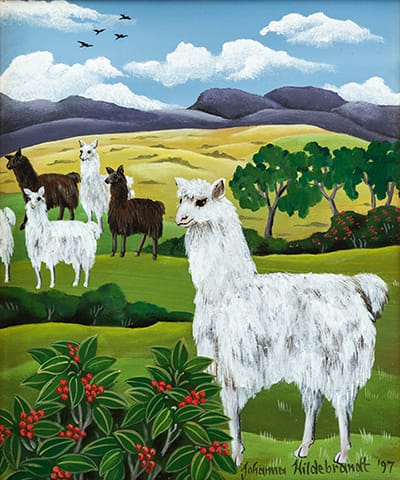
In this series of posts we will examine Johanna's artistic journey and her painting style as it developed but first we will take look at Naive Art and what artists who paint in this style aim to achieve.
Naive Art as a style has always interested me and I am fortunate in possessing several Croatian Naive paintings and lithographs purchased whilst travelling through this stunningly beautiful country in 1983.
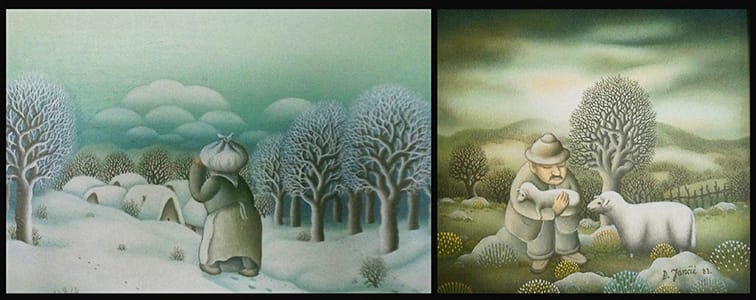
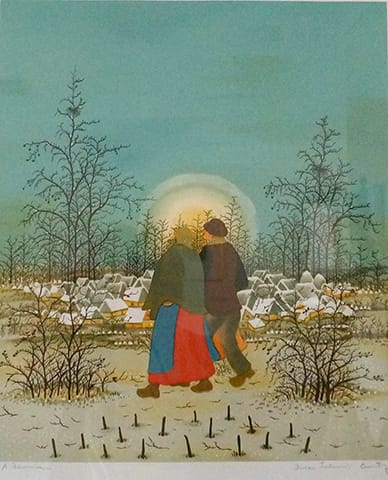
Naïve art is usually defined as visual art that is created by a person who lacks the formal education and training that a professional artist undergoes (in anatomy, art history, technique, perspective, ways of seeing). When this aesthetic is emulated by a trained artist, the result is sometimes called primitivism, pseudo-naïve art, or faux naïve art. 1
Another Naive artist I have in my collection is the Italian Norberto Proietti as shown below.
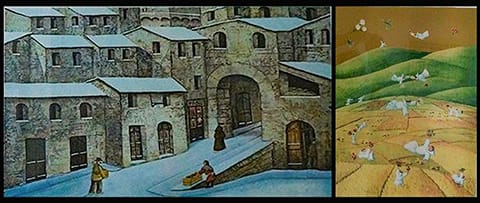
If you would like to learn more about these paintings please follow the Bookmark link below to the past post on my Naive Collection.
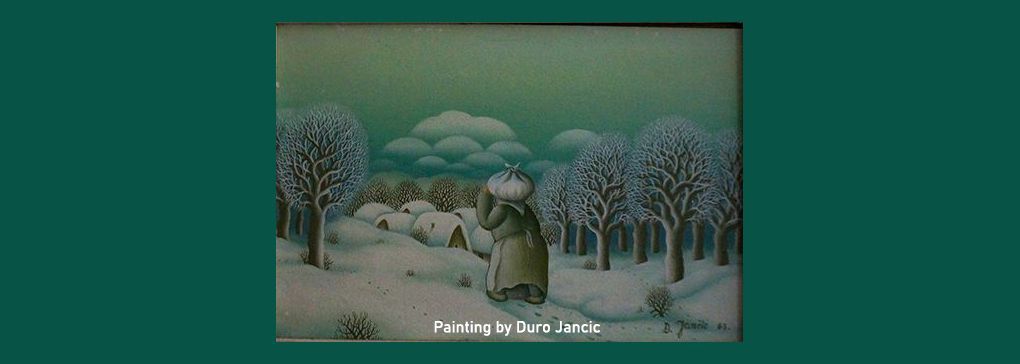
For me it is the slightly whimsical touch you see in many naive paintings which I find appealing. I also love the way ordinary people are depicted going about their everyday activities and almost always living in harmony with their community and environment. And of course, naive paintings are characterised by attention to detail and usually strong, bold colours.
There are endless definitions of what constitutes Native Art but the one I find most satisfactory comes from Jill and Martin Leman in their book A World of Their Own: Twentieth Century British Naive Painters. 2
In the introduction to their book the Lemans stated that:
Naive artists, whether or not they have had formal training, are outside the current movements and fashions of the fine art world. Their paintings are created out of love, even obsession, for their subjects. They present a fresh and startling perception - often of a visionary or dream-like quality - of the world. Scottie Wilson summed it up, when he said: 'It's a feeling you cannot explain. You're born with it and it just comes out. That's you, and that's all about it.' 2
They also went on to say that:
Many artists dislike the terms 'naive' and 'primitive' to describe their work, which is often of great visual subtlety and sophisticated design. But the other terms for this genre - folk, popular, Sunday painters, self-taught artists etc - are equally unsatisfactory. If one thinks of 'naive' as describing the straightforward and honest quality to be found in these paintings, and 'primitive' as the direct response that they arouse in the viewer, then perhaps the terms are more acceptable.2
The Scottie Wilson (1891-1972) referred to above was born Louis Freeman (birth certificate says Lewis), and was a Scottish, Jewish, outsider artist known particularly for his highly detailed style. Starting his artistic career at the age of 44, his work was admired and collected by the likes of Jean Dubuffet and Pablo Picasso and is generally accepted to be in the forefront of 20th-century outsider art.3
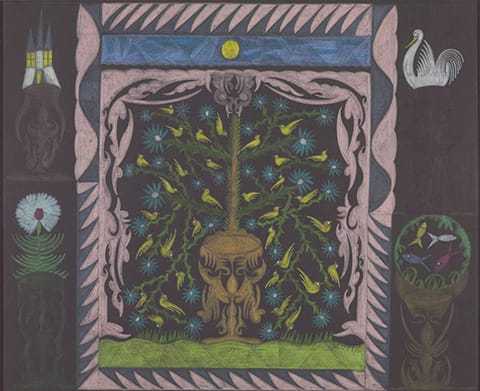
You can learn more about Scottie Wilson's works by visiting the Tate website given in the link below.
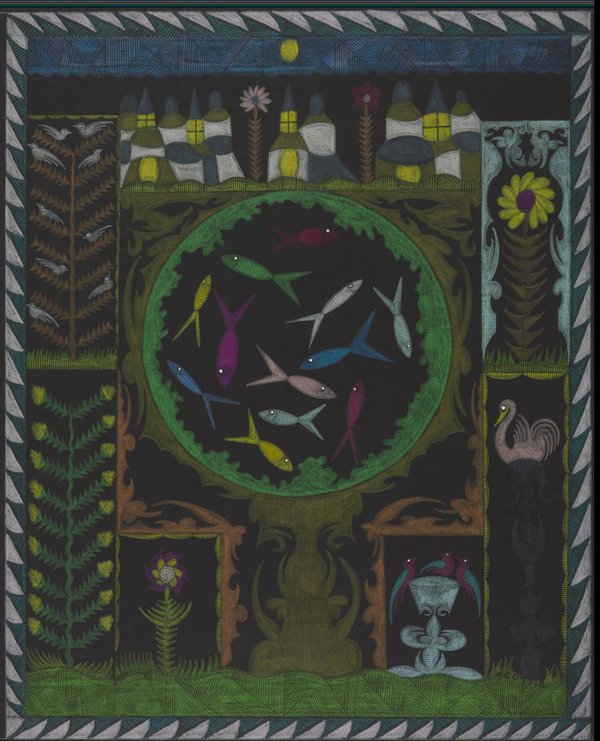
The AnArt4Life blog has showcased, over the years, a number of artists who would be classified into belonging to the school of Naive Art. Blog team member John Rowdy Wylie is influenced by this style with his inspiration coming very much from the iconic Australian outback artists known as the Brushmen of the Bush. Rowdy has given due homage to these influential artists in his painting Gems of the Desert which depicts the outback city of Broken Hill, NSW where the seminal works of the Brushmen were created.
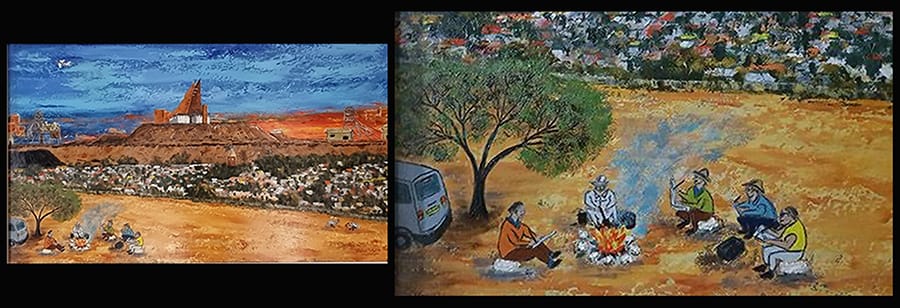
Rowdy's Gems of the Desert includes many symbols associated with Broken Hill but most importantly in the lower left foreground of the painting is a representation of the Brushmen of the Bush sitting around a campfire - painting and having a yarn: very much a naive art style touch! One of the Brushmen can be included in a discussion about the Naive Art style and that is Hugh Schulz.
The AnArt4Life blog has shown many posts on the wonderful paintings of Hugh Schulz as Andrew owns a very extensive collection of his paintings, two examples of which are shown below.
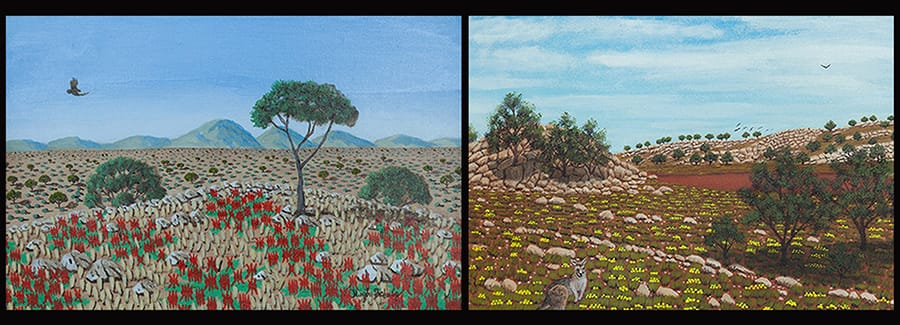
In 1994 a book was published on Naive Art in Australia, Canada and Europe by Vasa Carapic. Included in the artists represented in the book were Hugh Schulz and Johanna Hildebrandt. Below is a photo taken at the release of the book showing from left to right: Hugh Schulz, Johanna Hildebrandt, Michele Witner, Marie Gold and Vera Fennell. Andrew, who provided this photo believes that this was the only time Johanna and Hugh met.
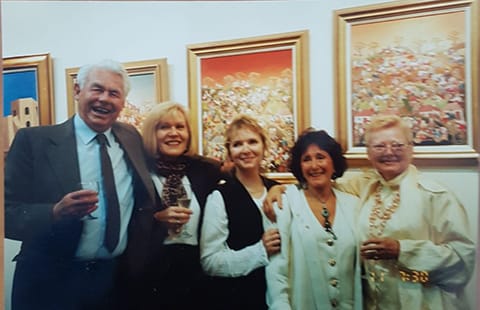
And so now we turn to showcasing some of the paintings by Johanna Hildebrandt which thanks to AnArt4Life team member Andrew and his substantial collection of Hildebrandt paintings allows us to study the journey of this enlivening artist.
Below is one of Johanna's early paintings which was created in 1983 in the traditional naive style on glass. Note the strong colours, attention to detail and a harmonious view of the world: strong features which remain to this day in the Hildebrandt oeuvre.
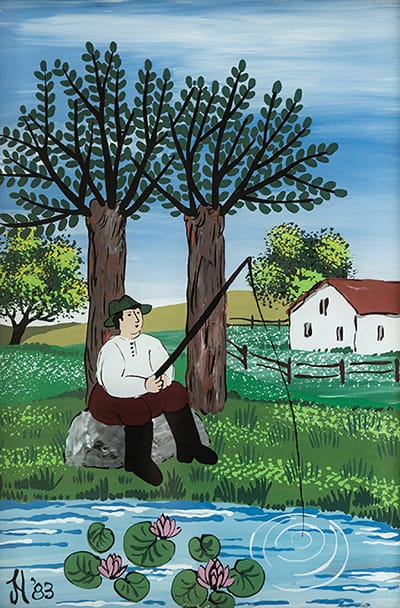
Andrew tells us: I began collecting paintings by Johanna in 1988 and believe over the next few years up to the mid 90s would have been one of her biggest supporters and to my great surprise she asked me if I would open an exhibition for her at Prouds Art Gallery in Sydney in May 1997.
I must admit that I hesitated for a bit as I'm not and never have been too comfortable about standing up in front of a crowd and making a speech. However I got over this pretty quickly as thought that I would probably never have such an opportunity again.
I spent weeks preparing a speech to include both information about the artist and and her work. Thankfully it went down well to the point that I was later told that it had been the best opening speech at this gallery!
This was also the time that I had just discovered the joy of alpacas and purchased a small property in the Hunter Valley, so lo and behold Johanna presented me with the "Alpacas in Landscape" at the completion of the opening.4
Tomorrow we begin to study Johanna's paintings in detail. When you look at her current paintings which are now created in a different style to what you see above, it is not hard to understand that the seminal stages of her journey as an artist were founded in the Naive style.
© Thank you to Johanna Hildebrandt who kindly gave permission for the images of her works to be shared on AnArt4Life and for providing assistance in the preparation of the posts on her works which are created using acrylic paints on canvas. She has had more than 20 Solo Exhibitions in Australia, Japan and Germany and has taken part in many important group shows internationally.
And a special thank you to the Collector Andrew from the Hunter Valley Region of New South Wales for sharing his Johanna Hildebrandt collection.
Andrew would also like to give a plug to Clare Farrelly who does such a wonderful and professional job of photographing these paintings so that they can be presented in such a way which is fitting to be showcased on the AnArt4Life blog.
Credits
1. en.wikipedia.org
2. A World of Their Own: Twentieth Century British Naive Painters by Jill and Martin Leman. 1985, London, Pelham Books Ltd.
3. tate.org.uk
4. Correspondence with Andrew from the Hunter Valley region of New South Wales
5. https://www.jhildebrandt.com.au/


